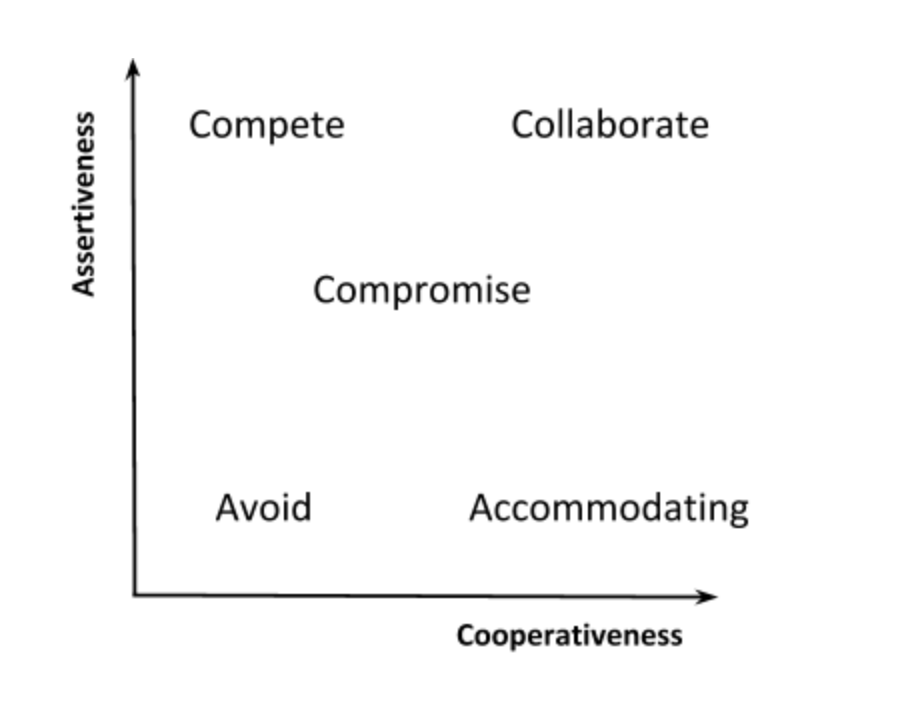Negotiation Notes
THIS IS MY PERSONAL NOTES FROM NEGOTIATION VIDEO TUTORIALS. PERSONAL USE ONLY.
Part 1. Dealing with Conflict
There are five conflict positions we can choose in a conflict situation. These positions are in terms with:
- Assertiveness: how much we try to satisfy our own concerns.
- Cooperativeness: How much we try to satisfy the concerns of others.
The conflict positions includes:
- Avoiding the conflict. When we avoid a conflict, our position is not to take a position. That means neither you nor I satisfy our concerns.
- Accommodating the conflict. When we accommodate the conflict, we are cooperative without assertive of our own concerns. That means I satisfy your concerns at the expense of my own.
- Competing the conflict. When we compete the conflict, we are highly assertive without being accommodating. That means I satisfy my concerns at the expense of yours.
- Compromising the conflict. When we compromise the conflict, we are being moderately assertive and moderately cooperative, and lay midway between competing and accommodating. That means we each give up some of our concerns in order to satisfy the other party.
- Collaborating the conflict. When we collaborate the conflict, we are being highly assertive of our own concerns, but also highly cooperative with regards to the concerns of other party. That means both you and I approach the conflict as a mutual problem allowing us to discover alternatives which satisfy all of our concerns.
The five conflict position can be shown in the chart below:

To conclude, it is very common to face conflict when we negotiate. However, when we have conflict, we have choice. And the best way to deal with a conflict is to collaborate. Collaborating succeed because it defines conflict as a mutual problem, and allows us to work in an integrated outcome. To collaborate the conflict, we must actively listening and talk to others openly. Both parties revisit and commit to the process. This requires most patient and commitment to achieve, but when we are successful, we completely satisfy the concerns of both parties.
Part 2. Three Rules of Win-Win Summary
There are three rules for win-win negotiating.
Rule 1. Change your behaviour from adversarial to cooperative.
- Don’t adopt the other negotiator’s hostility.
- Be a partner instead of a competitor.
- Try to understand the other negotiator’s point of view.
- Create an atmosphere of cooperation. Instead of trying to win, create an atmosphere in which both side feel that their needs are being satisfied. To ensure the other people’s need are satisfied, we can:
- Go beyond the other negotiators position
- Discover their real needs by asking questions like “what is your need”, “what do you expect to do”, etc.
- Find a way to satisfy their needs
Rule 2. Develop trust by listening to the other negotiator
- Listen 70% of the time, and talk 30% of the time.
- Ask questions to clarify and gain additional information.
- Don’t interrupt.
- Don’t contradict the other person. Instead, develop trust by listening and acknowledging the other person’s position. Woo the negotiator to show that you care, then express your position as an addition to them instead of as a disagreement.
Rule 3. Explore options for mutual satisfaction
- Focus on solving the problem.
- Brainstore possible outcomes.
- Do research.
- Break the agreement into parts.
- Find agreement whenever possible.